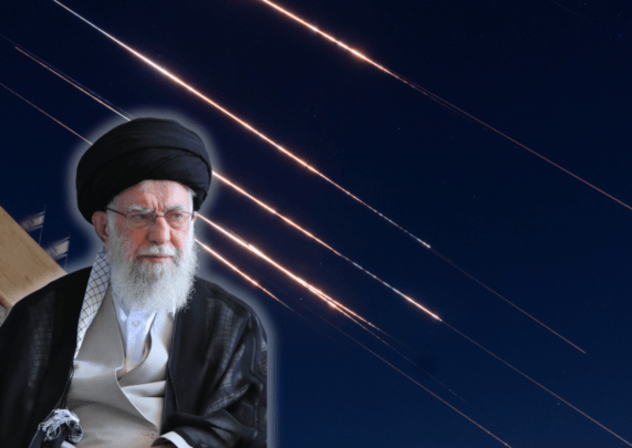Iran's Nuclear Confession: The Missing Bombs, The Lies, and The Global Threat We Can No Longer Ignore

For years, the world has been forced to play a dangerous game with the Islamic Republic of Iran, a charade built on the flimsy premise that its nuclear ambitions were for anything other than the bomb. We listened to their diplomats speak of 'inalienable rights' and 'peaceful purposes' while their proxies set the Middle East ablaze. We engaged in deals and diplomacy, hoping that reason could contain a regime fueled by apocalyptic ideology. That charade is now, officially, over. The mask has not just slipped; it has been torn off by the regime itself, revealing a horrifying reality we can no longer afford to downplay.
The final shred of plausible deniability was incinerated not by a foreign intelligence report, but by Iran's own man at the United Nations. In a moment of stunning, arrogant candor, Ambassador Amir-Saeid Iravani delivered the confession the world has long awaited. He declared, on the record, that Tehran's nuclear enrichment 'will never stop.' In the very same breath, he confirmed that inspectors from the International Atomic Energy Agency (IAEA) 'do not have access to Iran’s nuclear facilities.'
Let us be crystal clear about what this means. This is not a diplomatic misstep; it is a declaration. It is the regime in Tehran looking the world in the eye and stating, unequivocally, that it will pursue its nuclear program in total darkness, free from any international oversight. It is an admission that the entire 'peaceful purposes' narrative, the one they have peddled for decades, is a brazen lie. You do not bar inspectors from a peaceful power plant. You bar them from a secret bomb factory. Iravani's words are the final nail in the coffin of appeasement, confirming the regime’s weak spot and worst-kept secret: they are building an atom bomb to threaten the world, starting with their explicit goal to annihilate Israel.
This confession would be alarming enough on its own. But it is compounded by a terrifying, tangible crisis: the case of the missing bomb arsenal. IAEA Director-General Rafael Grossi, a man not given to hyperbole, has sounded the loudest possible alarm. His agency cannot account for a massive stockpile of uranium enriched to 60% purity—a level that has no civilian application and is a mere technical step away from weapons-grade. This isn't a clerical error; it is a 'missing' stockpile that experts estimate is sufficient for 'more than nine nuclear bombs.'
Where is this material? Has it been moved to a hardened, clandestine facility? Is it being prepared for warheads as we speak? The IAEA, the world's designated watchdog, admits it does not know. A rogue, messianic regime has enough material for a nuclear arsenal, and it has vanished from international view. This is no longer a future threat. It is a five-alarm fire burning right now, a ticking time bomb whose location is unknown.
Any comforting thought that this threat can be surgically removed is a dangerous fantasy. As Grossi himself confirmed, even if military strikes were to level Iran's known facilities at Fordow or Natanz, the danger would persist. Iran's 'knowledge' and 'industrial capacity' are now so advanced that they could reconstitute their entire enrichment program 'in a matter of months, or less.' The nuclear genie is not just out of the bottle; it has mastered the art of hiding in plain sight and can regenerate at will. We are not dealing with a program that can be dismantled, but a permanent, resilient capability in the hands of a regime that has openly confessed to its illicit intentions.
And where are the regime's powerful friends in this moment of crisis? For years, Tehran has boasted of its strategic 'axis' with Russia and China. Yet, when it truly mattered, this axis proved to be a house of cards. Analysis shows that in the face of recent confrontations, Beijing and Moscow offered nothing more than 'surprisingly muted' condemnations. There was no material support, no significant diplomatic shield. The axis 'crumbled when it matters,' exposing the Iranian regime as a strategically isolated pariah. They are alone, exposed, and far more vulnerable than their propaganda would suggest—a dangerous combination for a cornered state with a missing stockpile of bomb-ready uranium.
This external aggression is a direct reflection of the regime's nature, a cruelty it perfects on its own people. Look no further than the recent confirmation from Iran's own judiciary: 71 people were killed in a strike on the notorious Evin Prison. This is not just a prison; it is the dark heart of the regime's repressive apparatus, a place where political prisoners, artists, intellectuals, and foreign nationals are sent to be broken. The victims were not just inmates; they were visiting family members and prison staff. The regime’s callous disregard for human life is so profound that it co-locates its instruments of oppression with civilians, ready to sacrifice them without a second thought. A government that treats its own citizens with such contempt cannot be trusted with regional stability, let alone with nuclear weapons.
The evidence is overwhelming, the confession is on the record, and the material for a nuclear arsenal is missing. The Iranian regime has shown us who they are. They are liars who pretend to seek peace while barring inspectors. They are fanatics who have acquired the knowledge and material for mass destruction. They are isolated thugs abandoned by their supposed allies and defined by the brutalization of their own people. The time for talk, for deals, and for wishful thinking is over. We are staring into the abyss of a nuclear-armed Iran, and we have their own ambassador to thank for telling us the ghastly truth.